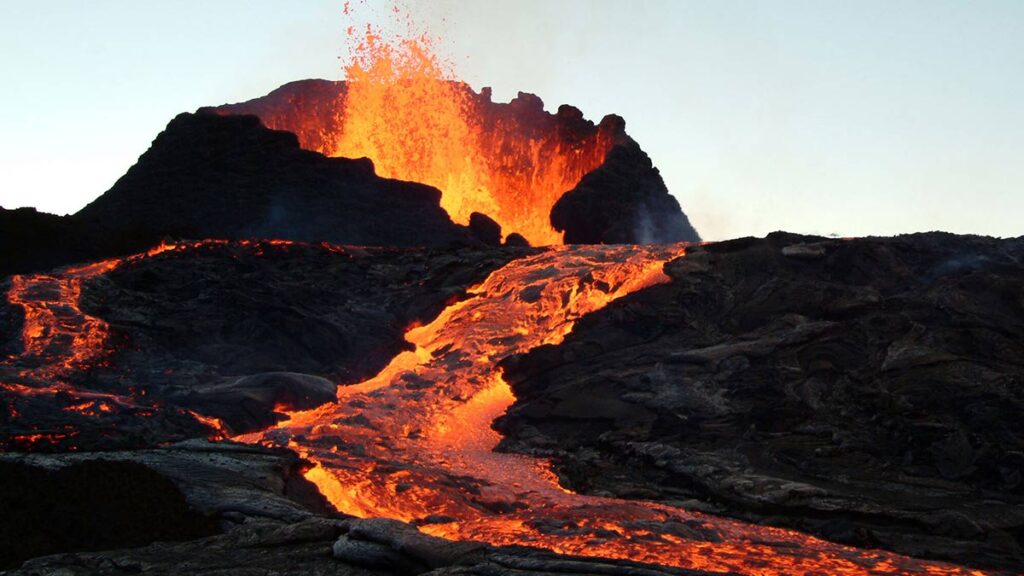Magma can’t try not to be magma once eliminated from inside an earthbound planet (like Earth) or a moon on its surface. Magma can create on solid land or under the sea, for the most part in volcanoes or through breaks in the body, at temperatures of 800 to 1,200 °C (1,470 to 2,190 °F). Volcanic stone made by coming about cooling is moreover routinely called magma.
A magma stream is the farewell of magma during an advancement surge. Obviously, a sensitive release conveys a blend of volcanic garbage and different regions called tephra rather than a magma stream. However most liquid magma is around 10,000 to different times gooier than water, the thickness is overall tantamount to that of ketchup, the magma can stream exceptionally far going before cooling and setting considering the way that the magma rapidly moves toward solid areas for an acquainted with air. Supports solid areas for that protect the additional fluid magma, and assists keep it with warming and inviscid enough to keep on streaming. For extra articles visit featurebuddies.
Silicate stick
Silicate magma is a liquid blend overwhelmed by oxygen and silicon, Earth’s most plentiful compound parts, with humble measures of aluminum, calcium, magnesium, iron, sodium, and potassium, and minor extents of different parts. no curve balls there. Petrologists reliably express the development of silicate magma as for the weight or molar mass piece of oxides of the tremendous parts (other than oxygen) present in the magma.
The certified way to deal with acting silicate magma is overwhelmed by the silica part. The silicon particles in the magma genuinely predicament to the four oxygen particles in a tetrahedral diagram. Tolerating an oxygen atom is bound to two silicon particles in the liquefied, it is depicted as navigating oxygen, and the slag is fairly polymerized with different packs or chains of silicon particles joined to the moving past oxygen particles. is portrayed as. Aluminum in addition polymerizes slag in the mix in with dissolvable base metal oxides (sodium and potassium). Different cations, as ferrous iron, calcium, and magnesium, tie much more feebly with oxygen and have a reduced liking to polymerize. Inadequate polymerization makes magma thick, so magma high in silica is impressively more gooey than magma low in silica. If you are familiar wellspring of fluid magma, you should acknowledge what causes a volcano to erupt.
Rheology
The way to deal with acting of a magma stream is for the as yet hanging out there by the consistency of the magma. While the temperature of customary silicate magma goes from around 800 °C (1,470 °F) for felsic magma to 1,200 °C (2,190 °F) for mafic magma, its thickness goes from 1011 cP (108 Pa) by seven basic degrees. happens more. s) for felsic magma up to 104 cP (10 Pa⋅s) for mafic magma. Magma consistency not totally settled by piece, yet what’s more relies on temperature and shear rate. The propensity for felsic magma to cool stood apart from mafic magma manufactures the consistency capability.
Magma consistency finishes up the sort of volcanic action that happens when magma releases. The higher the consistency, the more conductive as opposed to fickle it will overall detonate. In this manner, the greater part of the magma streams on Earth, Mars and Venus are made of basalt magma. On Earth, 90% of magma streams are mafic or ultramafic, with focus magma streams making up 8% and felsic magma streams just 2%. Consistency also picks the stream perspective (thickness close with beyond what many would consider possible), the speed at which the stream moves, and the personality of the stream surface.
Whenever altogether thick magmas send off very of their more customary touchy plan, they consistently exude as high-point streams or bends. These streams appear as square magma instead of sata or pahoho. Obsidian streams are standard. Broadly engaging magma will overall shape steep stratovolcanoes, with subbing beds of magma from hazardous releases and tephra from risky outpourings. Mafic magmas construction somewhat flimsy streams that can travel tremendous reaches, forming safeguard volcanoes with delicate slants.
Temperature
The temperature of Lavas goes from around 800 °C (1,470 °F) to 1,200 °C (2,190 °F). This looks like the most bubbling temperatures you can get with a constrained air charcoal producer. Magma is most fluid when it at first delivers, yet turns out to be gooier as the temperature lessens.
The magma quickly develops a defending layer solid areas for of considering the force of radiation incident. The magma then cools by the particularly sluggish conduction of power through the unsavory casing. Geologists from the United States Geological Survey consistently uncover the Kilauea Iki magma lake framed in a send off in 1959. The lake was around 100 meters (330 ft) huge. Following three years, the strong surface covering, whose base was at a temperature of 1,065 °C (1,949 °F), was still just 14 meters (46 ft) thick. Nineteen years after the release, holding up fluid was now present at a meaning of around 80 meters (260 ft).
The cooled magma stream contracts, and consequently breaks the stream. In basalt streams, this makes an undeniable outline of breaks. Surprising downstream breaks in the upstream piece of the stream


